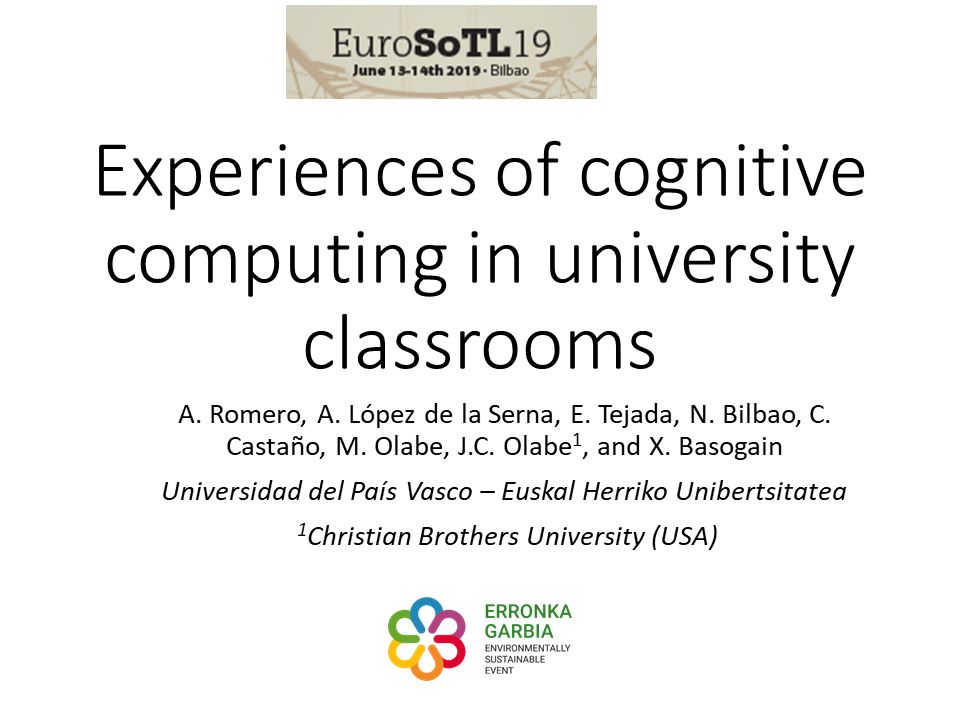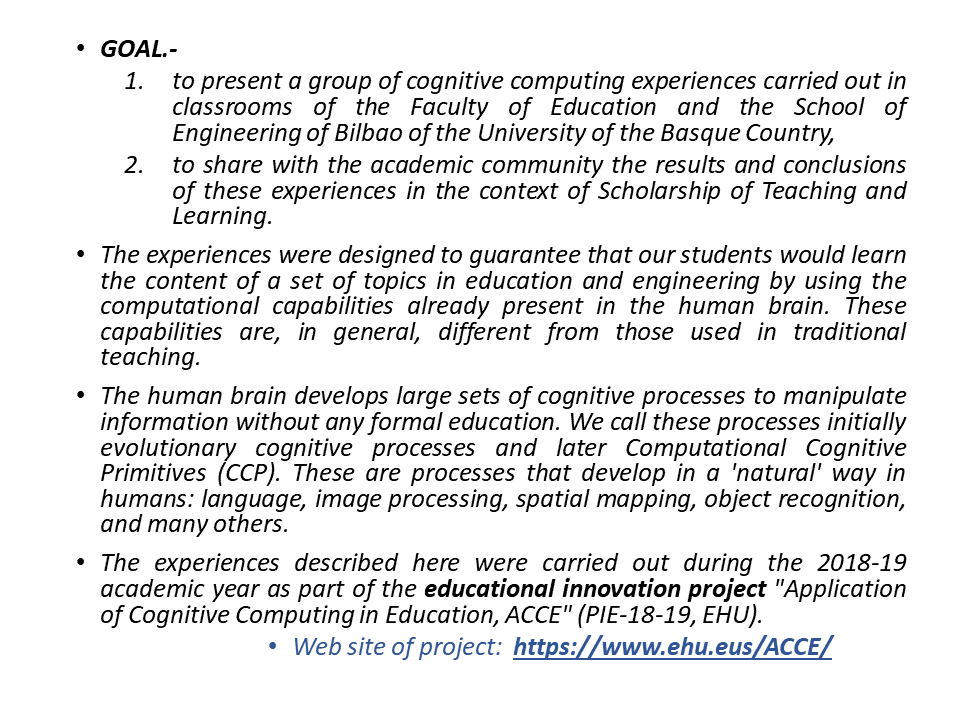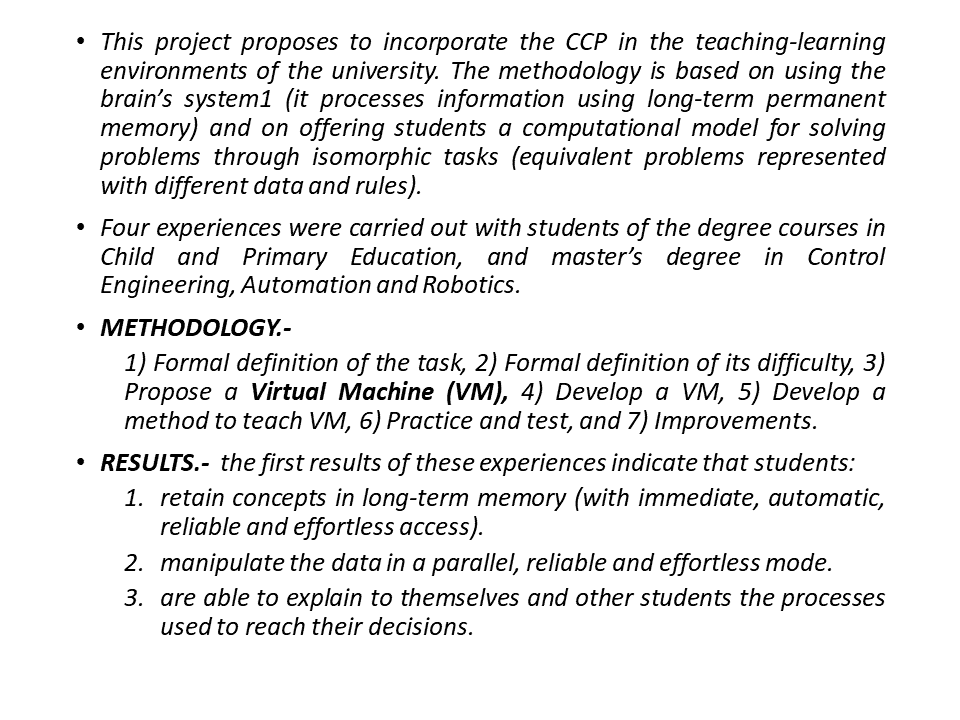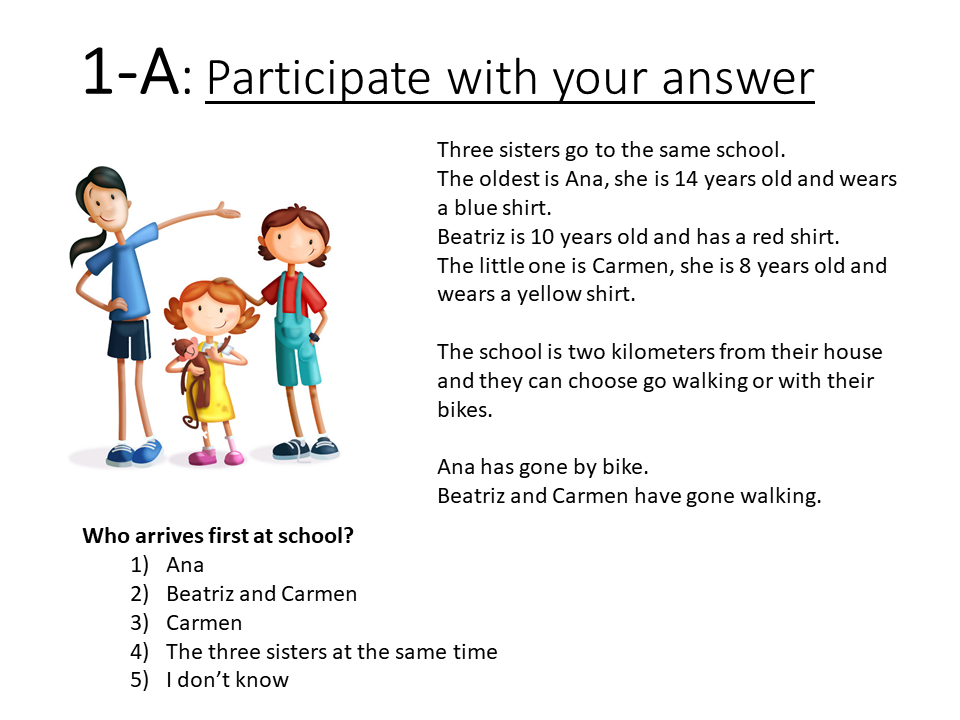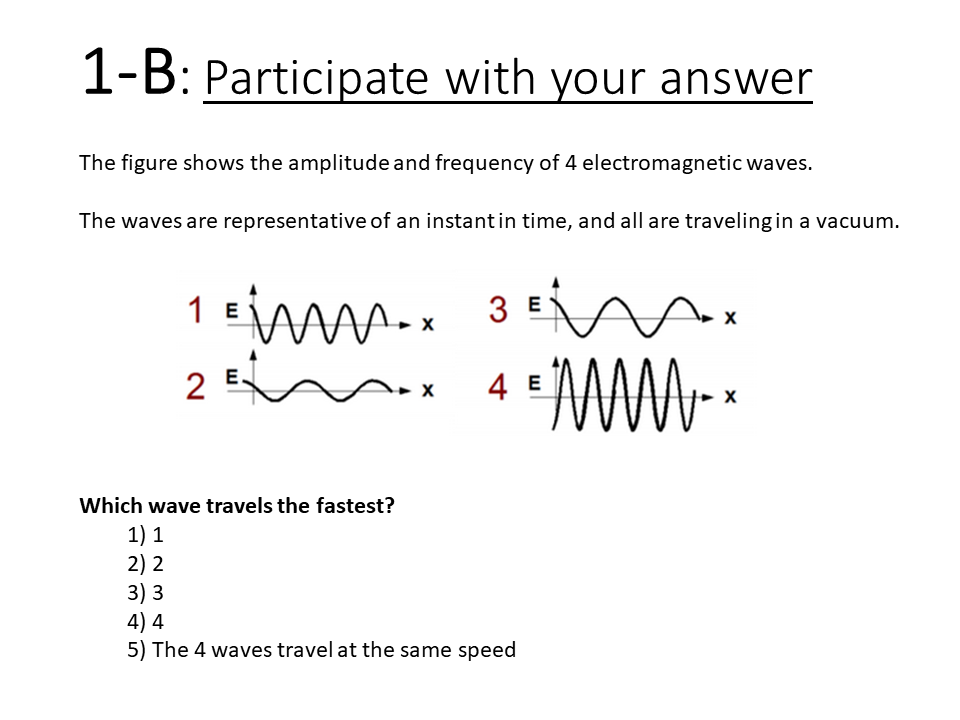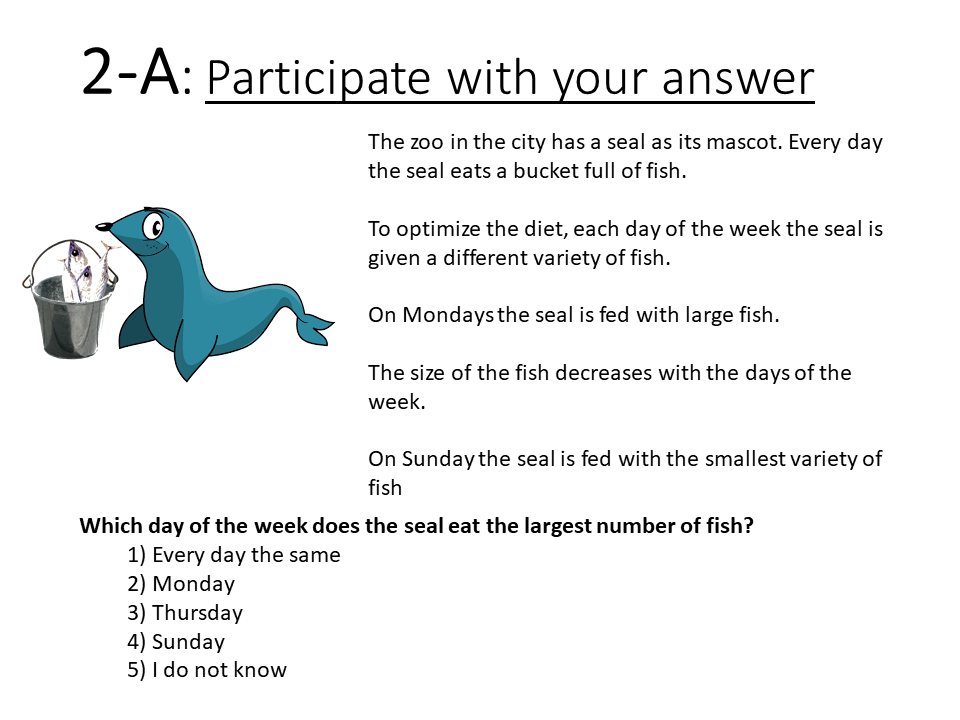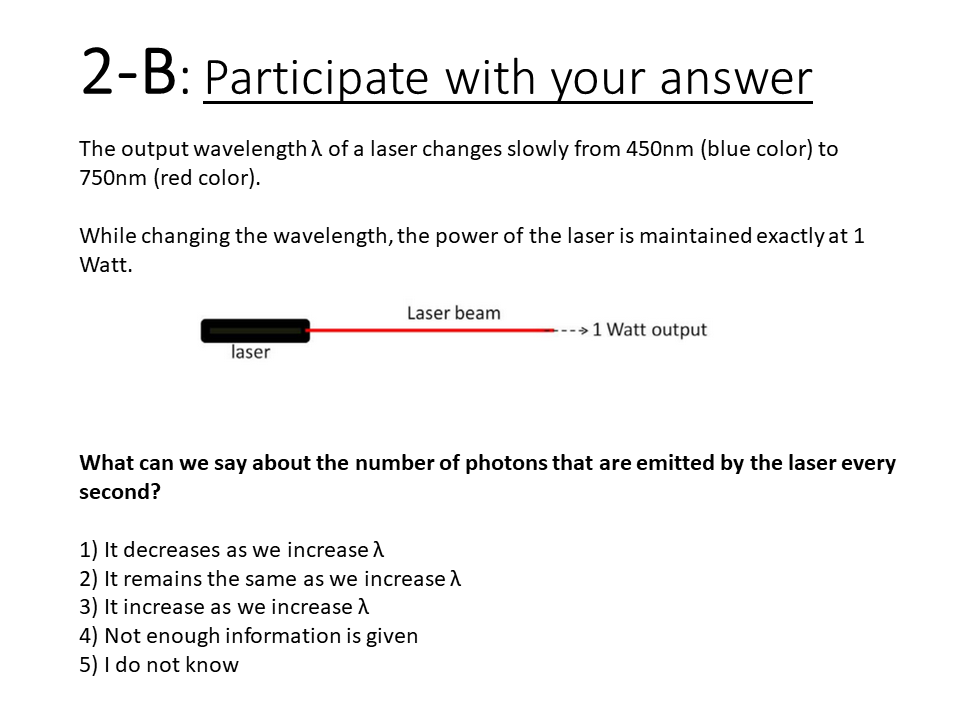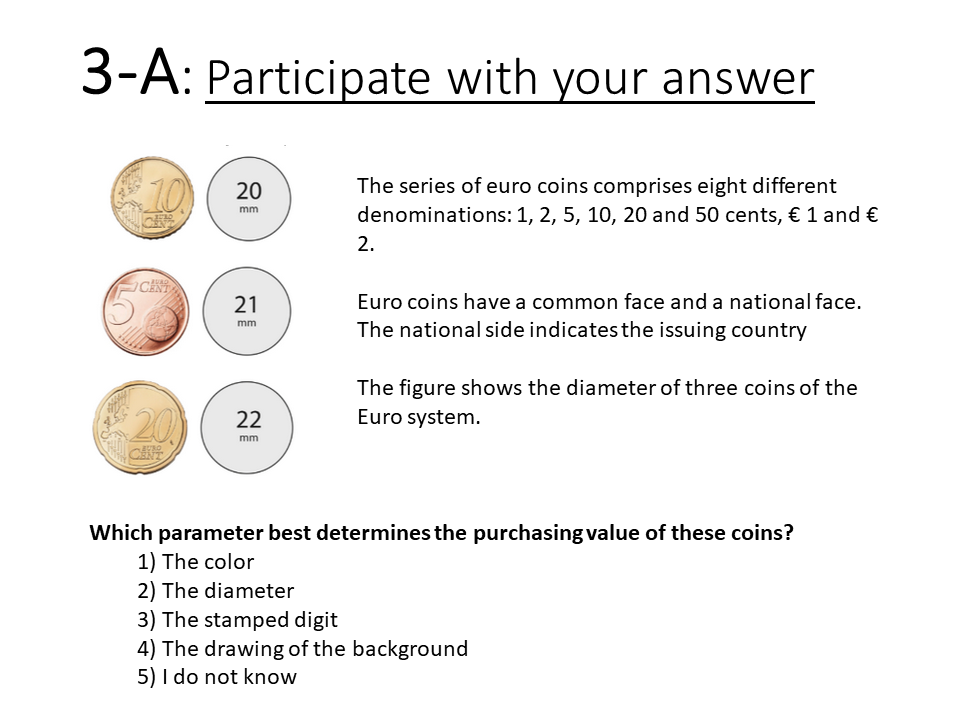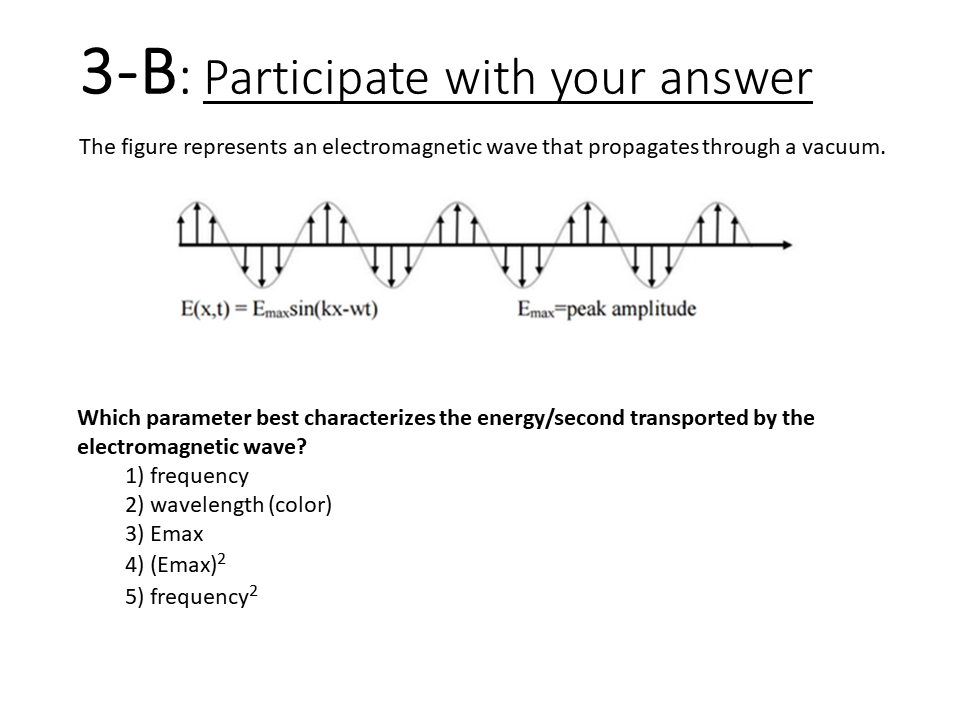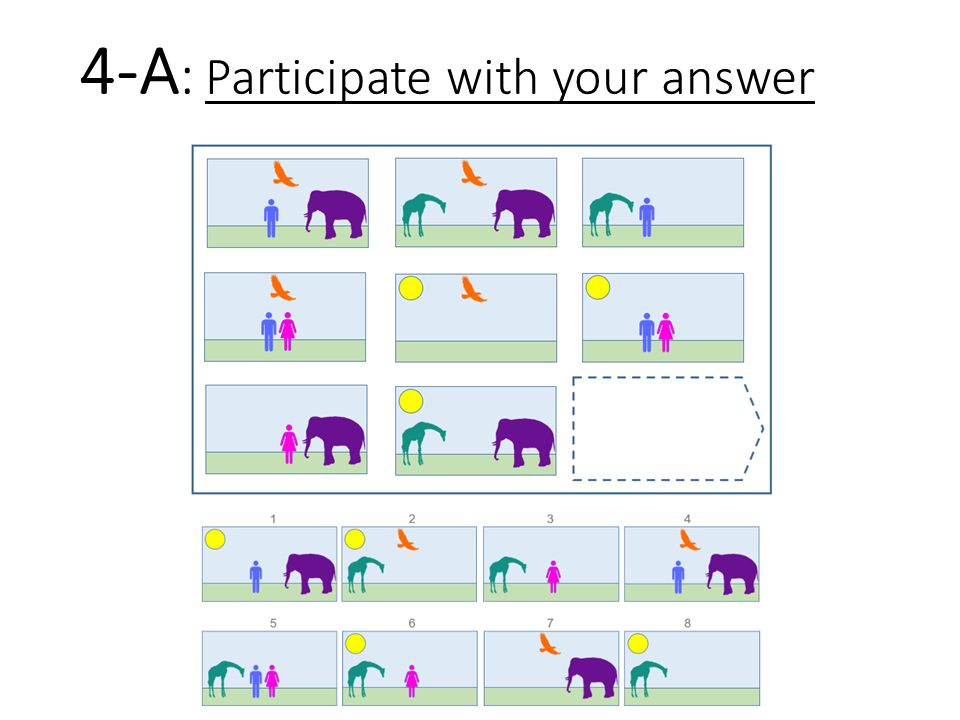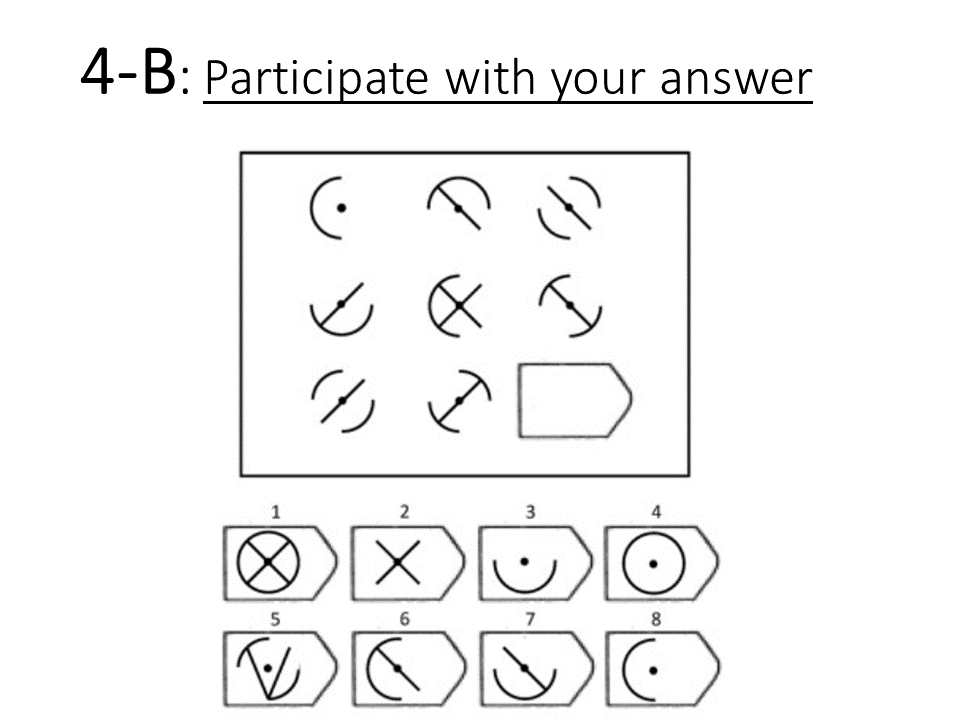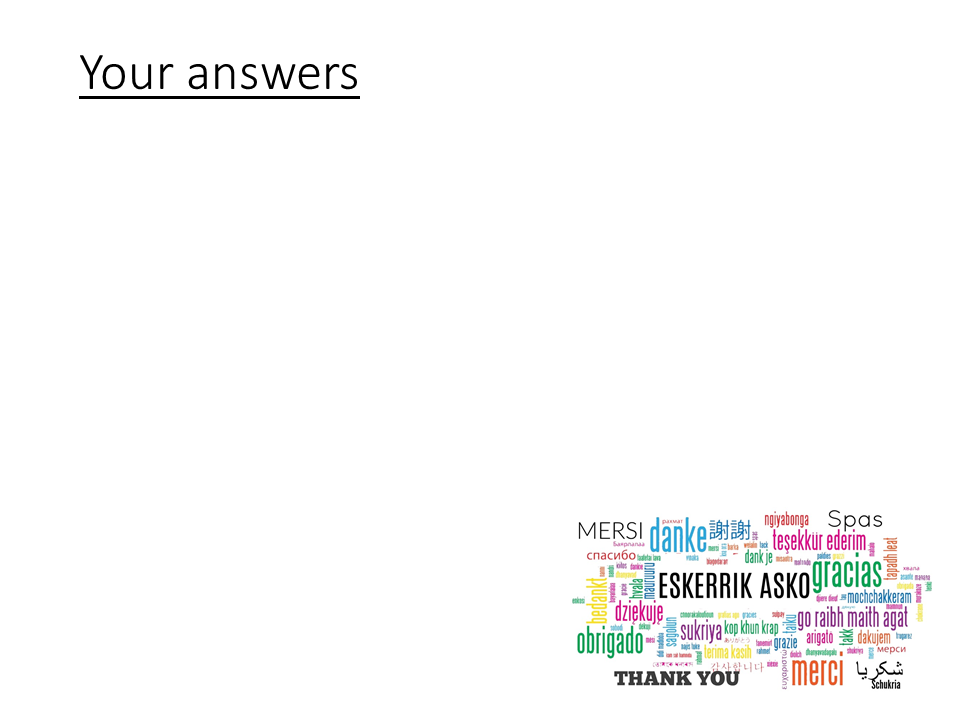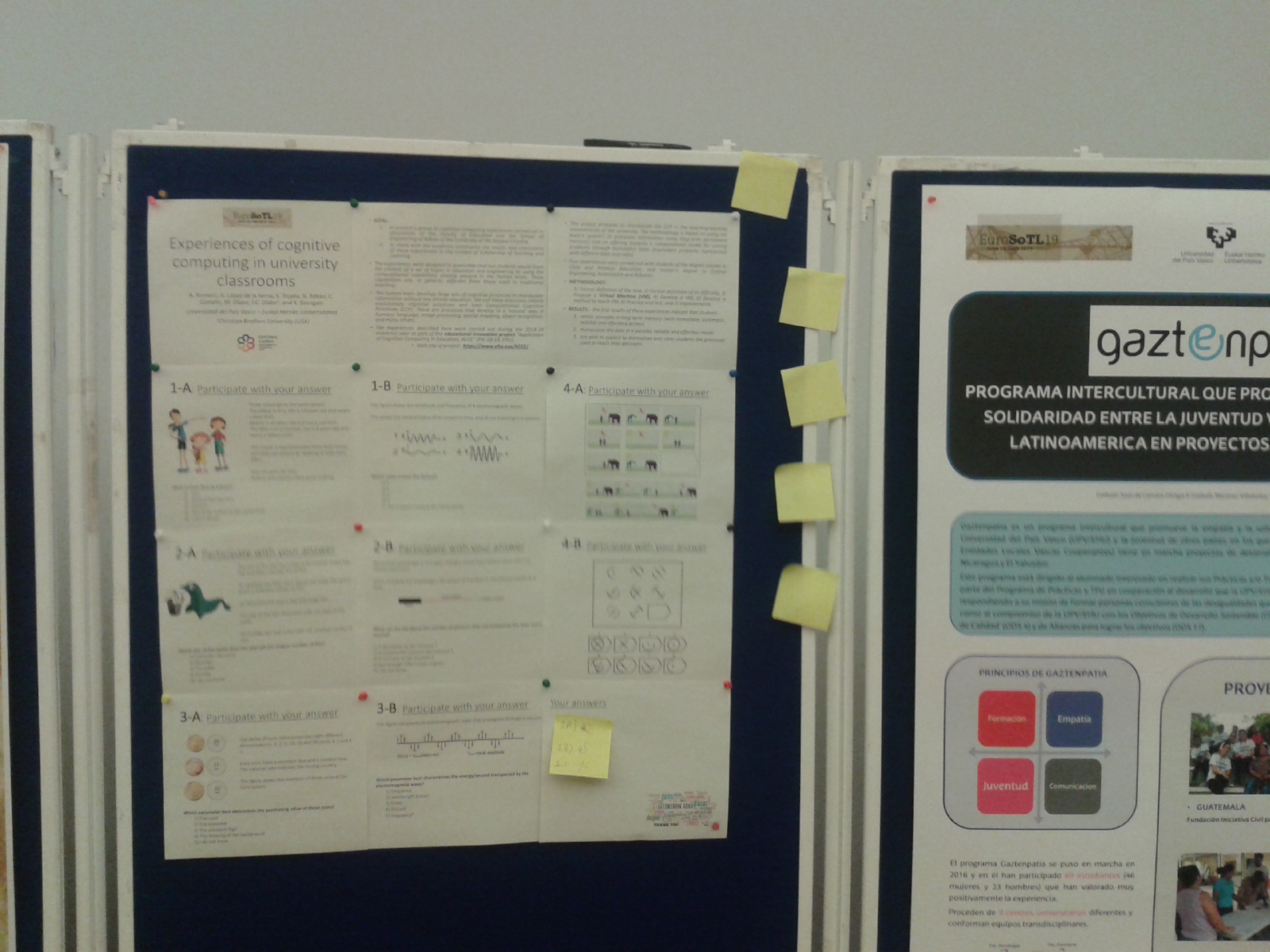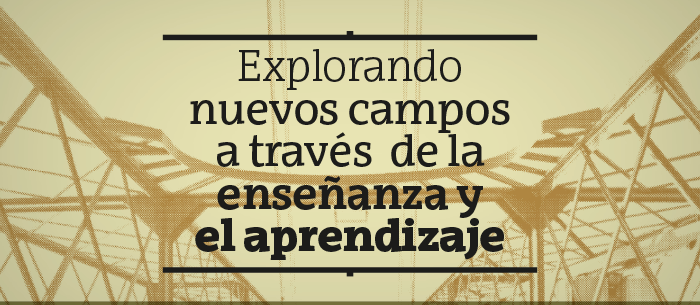
Title: Experiences of cognitive computing in university classrooms
Congress: III EUROPEAN SCHOLARSHIP OF TEACHING AND LEARNING CONFERENCE
Place and Date: Bilbao, 13 y 14 de Junio de 2019
Abstract:
The goal of the article is to present a group of cognitive computing experiences carried out in classrooms of the Faculty of Education and the School of Engineering of Bilbao of the University of the Basque Country, and to share with the academic community the results and conclusions of these experiences in the context of Scholarship of Teaching and Learning.
The experiences were designed to guarantee that our students would learn the content of a set of topics in education and engineering by using the computational capabilities already present in the human brain. These capabilities are, in general, different from those used in traditional teaching.
The human brain develops large sets of cognitive processes to manipulate information without any formal education. We call these processes initially evolutionary cognitive processes (ECP) and later Computational Cognitive Primitives (CCP) These are processes that develop in a 'natural' way in humans: language, image processing, spatial mapping, object recognition, and many others.
The experiences described here were carried out during the 2018-19 academic year as part of the educational innovation project "Application of Cognitive Computing in Education" (PIE-18-19, EHU).
This project proposes to incorporate the CCP in the teaching-learning environments of the university. The methodology is based on using the brain’s system1 (it processes information using long-term permanent memory) and on offering students a computational model for solving problems through isomorphic tasks (equivalent problems represented with different data and rules).
Four experiences were carried out with students of the degree courses in Child and Primary Education, and master’s degree in Control Engineering, Automation and Robotics.
The methodology of the experiences included the following steps: 1) Formal definition of the task, 2) Formal definition of its difficulty, 3) Propose a Virtual Machine (VM), 4) Develop a VM, 5) Develop a method to teach VM, 6) Practice and test, and 7) Improvements.
The first results of these experiences indicate that students: 1) retain concepts in long-term memory (with immediate, automatic, reliable and effortless access); 2) manipulate the data in a parallel, reliable and effortless mode; 3) are able to explain to themselves and other students the processes used to reach their decisions.


